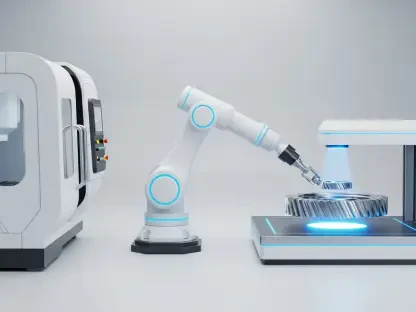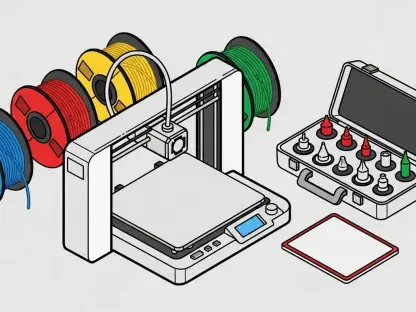Control system migrations are complex undertakings that require meticulous planning and execution. For industrial settings, ensuring a seamless transition from outdated systems to modern ones entails mitigating numerous risks. Front-End Loading (FEL) emerges as a pivotal methodology in this context, aiming to curb risks associated with cost, schedule, and scope through well-structured pre-planning. Having a comprehensive strategy early in the project lifecycle facilitates decision-making that can save both time and resources, thus leading to more predictable and manageable project outcomes.
Understanding Front-End Loading (FEL)
Core Principles of FEL
Front-End Loading (FEL) is a staged approach to project management that emphasizes comprehensive pre-planning. This methodology is typically divided into multiple stages often referred to as FEL 1, FEL 2, and FEL 3. Each stage builds upon the previous one, refining the project’s scope, resources, and objectives. While some projects may only require a single FEL stage, more complex undertakings benefit immensely from the thorough three-stage approach. The essence of FEL lies in its early evaluation of business needs and strategic decision-making capabilities. By identifying potential issues and opportunities beforehand, projects can avoid costly and time-consuming changes during the later phases.
The structured nature of FEL ensures that every aspect of the project is meticulously planned for, from resource allocation to risk assessments. This comprehensive approach facilitates communication and alignment among all stakeholders, paving the way for a smoother execution phase. Moreover, the iterative process of FEL stages encourages continuous improvement and refinement, which is particularly crucial in large-scale industrial projects. As businesses face the pressure of minimizing downtimes and adhering to strict regulatory standards, employing FEL techniques can make the difference between a project’s success and failure.
Value of Early Planning
Adjustments made at the early stages of a project are considerably more cost-effective compared to changes implemented later on. Front-End Loading (FEL) plays a pivotal role in enabling such early-stage adaptations, thus keeping projects within budget and on schedule. The stage-gated process ensures that every decision is backed by thorough analysis and substantiated data, minimizing the chances of unforeseen outcomes. Early planning also provides a holistic view of the project, allowing managers to map out a clear trajectory for successful execution. This foresight directly contributes to reduced risks and heightened operational efficiency.
By scrutinizing all potential variables and constructing a robust execution strategy during the initial phases, project managers can preemptively address any issues that might arise, ranging from resource shortages to technological incompatibilities. This level of preparedness eliminates the need for expensive, last-minute troubleshooting or drastic changes, which often derail projects. Furthermore, early planning encourages stakeholder engagement from the outset, thereby fostering a collaborative environment where all parties are invested in the project’s success. This collective involvement helps to maintain momentum and ensures that the project’s objectives remain aligned with the overall business strategy.
Key Deliverables of Front-End Loading
Execution Strategy and Resource Planning
A well-documented execution strategy is crucial for successfully migrating control systems in industrial settings. This comprehensive roadmap delineates every step necessary for project completion, ensuring alignment among all team members. Complementing the execution strategy is a detailed resource plan that effectively allocates human and material resources. Having these foundational documents in place from the project’s outset enables smooth transitions and operational continuity. It also ensures that all stakeholders are aware of their roles and responsibilities, paving the way for a coordinated effort towards achieving project goals.
The execution strategy should outline key milestones, deliverables, timelines, and performance metrics. This high level of detail allows for tracking progress and assessing performance against predefined criteria. On the other hand, the resource plan should address both immediate and long-term needs, including personnel, equipment, and materials. Proper resource allocation mitigates the risk of bottlenecks and ensures that every phase of the project proceeds without unnecessary delays. This dual focus on execution and resource planning establishes a strong foundation, reducing uncertainty and enhancing the project’s likelihood of success.
Risk and Change Management
A robust risk management plan is indispensable for identifying potential pitfalls and devising strategies to mitigate them. Anticipating and managing risks effectively reduces the likelihood of disruptions and ensures that the project remains on track. Similarly, a comprehensive change management plan is essential for maintaining control over the project’s scope, schedule, and budget. This plan establishes protocols for systematically evaluating and implementing any modifications, ensuring that all changes are methodically vetted and approved. Effective risk and change management plans serve as the backbone of successful control system migrations, providing a buffer against uncertainties and safeguarding the project’s integrity.
An integral aspect of risk management is the continuous monitoring of identified risks and the prompt response to emerging threats. Likewise, change management involves a structured approach to review and authorize any alterations in the project’s course. Both plans require the involvement of key stakeholders, who should be kept informed and engaged throughout the project’s lifecycle. Regular updates and reviews help to align the project team’s efforts and ensure that all interventions align with the overarching objectives. In essence, a proactive approach to risk and change management minimizes unforeseen disruptions, thereby fostering a stable environment conducive to successful project delivery.
Approaches to Control System Migration
Rip and Replace Method
One approach to control system migration is the “Rip and Replace” method, which involves a complete system overhaul. This strategy is typically executed during a major operational shutdown to facilitate a swift transition from outdated systems to modern ones. While this approach can be efficient, it carries the risk of prolonged downtime if complications arise during the system restart phase. The Rip and Replace method requires precise coordination and extensive pre-planning to minimize risks. Though challenging, this method can result in a rapid and effective migration when executed perfectly, ensuring that the system upgrade is comprehensive and cohesive.
Implementing the Rip and Replace method necessitates a deep understanding of the existing systems and meticulous planning of the new infrastructure. Every component, from hardware to software, must be scrutinized to ensure compatibility and functionality. This holistic approach minimizes the risk of post-migration issues, but it demands substantial upfront investment in terms of both time and resources. Additionally, contingency plans must be in place to address any unexpected challenges that may emerge during the migration process. Despite its complexities, the Rip and Replace method can offer significant long-term benefits, including improved system reliability and enhanced performance.
Phased Approach
In stark contrast, the phased approach to control system migration involves incremental upgrades, thereby reducing downtime risks and maintaining ongoing operations. This method allows specific sections of the plant to be upgraded in phases, ensuring continuous functionality while upgrades are performed. Different strategies can be employed within this phased approach, such as executing piecemeal upgrades by plant area or beginning with the replacement of the top layer (servers and operator stations), followed by the controllers and I/O modules. Although this method is more flexible, it demands meticulous planning and coordination to ensure that each phase integrates seamlessly with the next.
The phased approach offers several advantages, including reduced operational disruption and greater control over the migration process. By breaking down the project into smaller, more manageable segments, teams can address issues as they arise, thus avoiding the significant risks associated with a full system overhaul. However, this method also requires careful scheduling and resource allocation to ensure that each phase is completed efficiently without impacting the ongoing operations. Extensive documentation and communication are vital to track progress and ensure that each stage aligns with the overall project objectives. The phased approach, while complex, provides a balanced pathway for upgrading control systems without compromising operational integrity.
Challenges of Using Old System Elements
Reliability Concerns
Retaining elements of legacy systems during control system migrations can introduce significant long-term reliability concerns. While integrating new components with old infrastructure might seem cost-effective initially, it often necessitates the use of adapter and harness systems, commonly referred to as the “alien approach.” Although this method might offer a temporary solution, it tends to increase potential failure points and can complicate troubleshooting processes. Considering the reliability trade-offs is deeply important; leveraging existing systems to cut immediate costs may result in higher maintenance and operational expenses in the long run.
The alien approach often leads to a complex and convoluted system architecture, which can be difficult to manage and maintain. This complexity can diminish system performance and negatively impact overall reliability, leading to frequent downtimes and costly repairs. Additionally, the integration of new and old components may not fully utilize the advanced features offered by modern control systems, thus limiting the system’s potential. To mitigate these issues, it is advisable to conduct a thorough assessment of the legacy components and evaluate their compatibility with the new system. Investing in a complete upgrade, though costlier upfront, can ultimately offer greater reliability and operational efficiency.
Documentation and Functional Specifications
Up-to-date documentation is essential for any successful control system migration. However, many existing systems lack comprehensive, current documentation, creating significant challenges during the migration process. During the FEL phase, it is vital to assess whether existing documents suffice or if new functional specifications must be developed. Clear, accurate documentation ensures the smooth migration of controller logic to new systems. It also aligns expectations between the project owner and the automation engineers, setting the stage for an efficient and effective transition. Developing a living functional specification that evolves with the project is critical for maintaining system integrity and meeting project goals.
Creating new functional specifications necessitates a thorough understanding of the current system’s operations and performance metrics. This process involves extensive collaboration between the project team and the system operators to capture all relevant information accurately. Updated documentation provides a clear roadmap for the migration process, minimizing the risk of errors and ensuring that the new system operates as intended. Furthermore, well-maintained documentation facilitates future upgrades and maintenance activities, thereby extending the system’s lifespan and enhancing its overall performance. In summary, diligent documentation and functional specification development are foundational elements for a successful control system migration.
Managing Expectations
Clarifying Owner/Operator Needs
A thorough understanding of owner/operator expectations is fundamental to the success of any control system migration. Discussions should cover the project’s scope, the desired start, and the extent of migration, ensuring that all parties have a clear understanding of the objectives. Specific preferences, such as preserving old graphics or existing control logic, must be clearly defined to balance familiarity with innovation. Modern systems offer enhanced functionalities, and it’s essential to weigh the desire to retain familiar elements against the benefits of adopting new features that can deliver greater operational efficiency and flexibility. Clear communication at the outset ensures that all stakeholders are aligned, reducing the risk of misunderstandings and unmet expectations.
Establishing a mutual understanding of the project’s goals and requirements enables the project team to tailor the migration process to meet these needs effectively. This collaborative approach helps to build trust and ensures that any potential issues are addressed proactively. Regular updates and feedback sessions throughout the project further reinforce this alignment, allowing for adjustments as needed to accommodate changing circumstances or new insights. In essence, managing expectations involves continuous communication and collaboration, ensuring that the final outcome aligns with the owner’s vision and delivers tangible benefits.
Strategic Decision Making
Comprehensive planning during the FEL phase facilitates proactive problem-solving and effective decision-making. Clear communication of objectives and priorities ensures that all stakeholders are on the same page, reducing last-minute stressors and enabling a more focused approach to project execution. Utilizing available data and insights to inform strategic decisions helps to maximize return on investment while minimizing risks. A meticulously developed plan during the initial stages of the project lays the groundwork for smooth implementation, enhancing overall project outcomes and ensuring aligned efforts toward common goals.
Strategic decision-making involves a thorough analysis of all available information to identify the best course of action. This process requires collaboration among all stakeholders, including project managers, engineers, and operators, to ensure that all perspectives are considered. By involving key players in the decision-making process, the project team can leverage diverse expertise and insights, leading to more informed and effective decisions. Additionally, strategic planning helps to anticipate potential challenges and develop contingency plans, thus reducing the likelihood of disruptions and ensuring that the project stays on track. Ultimately, a strategic approach to decision-making enhances project success by aligning efforts and resources towards achieving the project’s objectives.
Conclusion
Undertaking control system migrations in industrial settings is an intricate process that demands careful planning and precise execution. Transitioning seamlessly from outdated systems to state-of-the-art ones involves addressing numerous risks effectively. To successfully mitigate these risks, Front-End Loading (FEL) stands out as a crucial methodology. FEL focuses on reducing potential cost overruns, schedule delays, and scope changes through detailed and thorough pre-planning. By developing a comprehensive strategy in the early stages of the project, stakeholders can make informed decisions that ultimately save both time and resources.
A well-structured FEL approach allows for more predictable and manageable project outcomes, eliminating many uncertainties. This early intervention is essential because it sets the stage for the entire project’s success, ensuring that objectives are met without significant hiccups. In essence, a well-executed FEL process contributes to smoother transitions and more reliable project deliveries. Therefore, leveraging FEL in control system migrations not only enhances efficiency but also aligns with long-term operational goals, driving overall industrial growth and stability.









